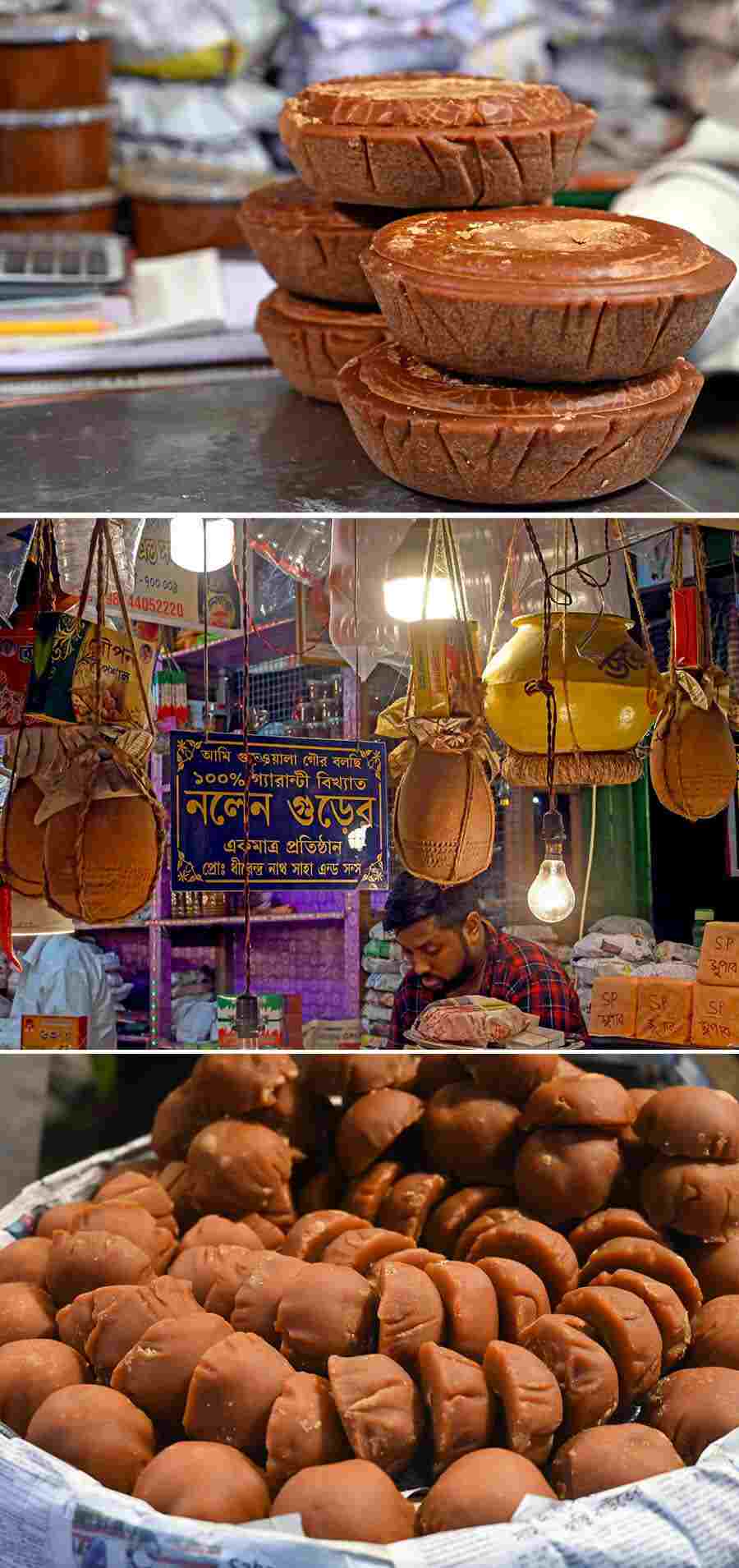
Kolkata winters are synonymous with ‘gur’ (jaggery). ‘Khejurer gur’ is the most sought after and comes in various shapes, sizes and consistencies from ‘patali’ (flat and hard jaggery cakes of varying sizes) to ‘jhola’ (liquid) or ‘nolen gur’ or ‘muchi’ (small conical shaped jaggery). Even Sukumar Ray declared his love for this liquid gold — “… kintu shobar chaite bhalo pauriuti aar jhola gur.”
All images by Amit Datta/My Kolkata
‘Khejure gur’ is made from the sap of date palm trees. ‘Gur’ collectors tie clay pots at the top of the tree for it to stay overnight. A dark brown syrupy substance is collected in the pots and, early in the morning, when it is still dark, the pot full of sap or syrup is brought down

The date palm sap is simmered and made into jaggery. The process of simmering and making the jaggery requires experience and skill as it determines the quality of ‘gur’. The 1973 film ‘Saudagar’, based on Narendranath Mitra’s ‘Rosh’, told the story of Moti (Amitabh Bachchan), a 'gur' collector, who marries Mahzubeen (Nutan) because of her repute as a skilled ‘gur’ maker

‘Khejurer gur’ or date palm jaggery is a seasonal delicacy that people wait the entire year for. It is used to make a variety of sweets — ‘gurer sandesh’, ‘gurer rosogolla’ — besides ‘pithe’ and ‘payesh’, of course. ‘Nolen gur’ has also become a much-wanted ingredient for many fusion desserts — be it ice cream, cake, souffle, mousse or cheesecake
From the ‘parar dokan’ (neighbourhood shop) to shops in markets, from sweet shops to the trusted ‘gurwallah’, jaggery is available almost everywhere in winter. But if there is one place in Kolkata where you can blindly go to for ‘gur’ of the best quality, it is Baithakkhana Bazaar in Sealdah. The wholesale market stocks jaggery of all kinds
The jaggery comes mainly from Jalongi (Murshidabad), Katwa (Burdwan) and Nadia. The market is set up soon after Kali Puja and gur is available till February-March. At other times, the vendors usually sell vegetables. The price of gur starts from Rs 60 or 65 per kg and goes up to Rs 180 per kg for ‘patali’. ‘Nolen gur’ is sold at Rs100 per kg while ‘muchi’ prices start at Rs 70. “Amader ekhane wholesale ‘daam e gur pawa jae’. ‘Tobe’ market ‘er ja obostha aar’ weather'er joyno gur er daam bere jachche’ ( You can get jaggery at wholesale rates here. But inflation and weather have made it costlier),” said Gopal Chandra Das, the secretary of the Baitakhana Bazaar
The market is open on all seven days, from early morning till 10pm. The bazaar starts from Chayya Stores and ends at Taj Mahal hotel, Sealdah. The name Baithakkhana has a long history. It is said that there was a banyan tree in the area that is now Sealdah station. It was a resting place for traders who would come to Kolkata to sell their merchandise. It was like a living room, and hence the name Baitakkhana. Job Charnock used to come to this place to meet local merchants. Though this is debatable, the place retains its name